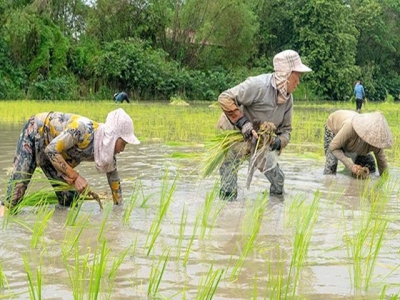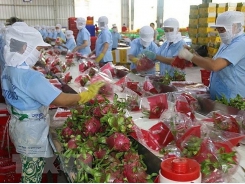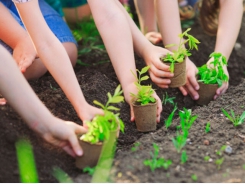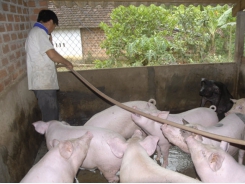Rice farming without synthetic fertilizers, higher economic efficiency

The model of cultivating rice without synthetic fertilizers has taken root in the Mekong Delta. Although the yield was only 3 to 4 tons per hectare the economic efficiency was higher.
Viet's rice field applied traditional farming method combined with aquaculture to gain higher economic value. Photo: LQV.
Director of Chau Thanh district's Department of Agriculture and Rural Development (Kien Giang province) Le Quoc Viet said farmers must take account of the economic efficiency instead of the high yields then they can reduce fertilizer use.
Intensive farming, a way of producing large amount of crops for many consecutive years can damage the fertility of soils. Therefore if the amount of chemical fertilizers is reduced the rice yields will fall as a result. However it's necessary to find a way to reduce fertilizer use without sacrificing food production.
According to Viet to cut fertilizer use in rice cultivation farmers must adopt technical measures properly, not apply intensive farming practice too often so that the soil have time to be nourished by organic matters. Before planting seeds farmers must prepare soil carefully, applying sowing rates at lower than 100kg/ha, adopting advanced practices like SRI, IPM.
Lower sowing rates will help reduce fertilizer and pesticide uses. Due to less fertilizer use it's necessary to determine the most suitable time and proper method of fertilizer application to increase fertilizer use efficiency.
Viet added the amount of synthetic fertilizers could be reduced to 25-39kg/cong (or half the normal amount).Although the yield could shrink to 300 -500 kg per hectare economic efficiency was still ensured.
Viet himself has nearly applied no chemical fertilizers on his rice field.
Viet said since 2017 he has converted more than 2.5 hectares of his family's rice land in Minh Phu from cultivating two rice crops per year into rice-fish farming system.
He chose indigenous rice varieties to grow on his field, absolutely saying no to pesticides in cultivation. Instead he adopted ecological measures, planting flowers near the field to attract useful insects as a method of controlling pests. He raised ducks for snail control while fish in the integrated farming system help kill the plant-hoppers. Particularly he made compost from organic residues from his farm to fertilize the rice field.
Only when the rice field was flood or submerged due to heavy rain in the early stage of rice plant growth did he use 2-3kg of NPK fertilizer mixed with 10kg of vermicompost and spread all over the field. Most of the time rice plants grew naturally until the harvest.
Viet also worked with other farmers in the district to apply integrated rice and aquaculture farming method on an area of over 40 hectares. The model was enthusiastically supported by farmers. Because of rice cultivation without chemical fertilizers, pesticides and without intensive farming method there were three benefits including healthy soils, healthy rice plants and healthy farmers.
According to a study conducted by a team of researchers at the International Rice Research Institute (IRRI) the rice crop needs the following uptake of N, P and K to produce 1 ton of grain per hectare: Nitrogen (N):15 kg. Phosphorous (P): 6 kg. Potassium (K): 18 kg. The soil itself contains the macronutrients that are enough to sustain a certain rice yield (ranging from 2 tons to 4 tons per hectare) depending on types of soil.
Thus, fertilizers only help increase the yields but not decide the crop production as a whole. Amid the massive rally in fertilizers, rice farmers should choose the best way to apply fertilizer to ensure desired crop productivity.
Traditional farming method uses indigenous rice cultivars, uses no chemical fertilizers. Therefore Viet could harvest only 3 tons to 3.5 tons of rice per hectare depending on rice varieties. But in return, he could sell his rice for higher prices plus additional income from fish and duck farming.
Có thể bạn quan tâm
Phần mềm

Phối trộn thức ăn chăn nuôi

Pha dung dịch thủy canh

Định mức cho tôm ăn

Phối trộn phân bón NPK

Xác định tỷ lệ tôm sống

Chuyển đổi đơn vị phân bón

Xác định công suất sục khí

Chuyển đổi đơn vị tôm

Tính diện tích nhà kính

Tính thể tích ao hồ



 Vietnam’s litchis, longan sell at high prices overseas
Vietnam’s litchis, longan sell at high prices overseas  Pork prices fluctuate constantly
Pork prices fluctuate constantly